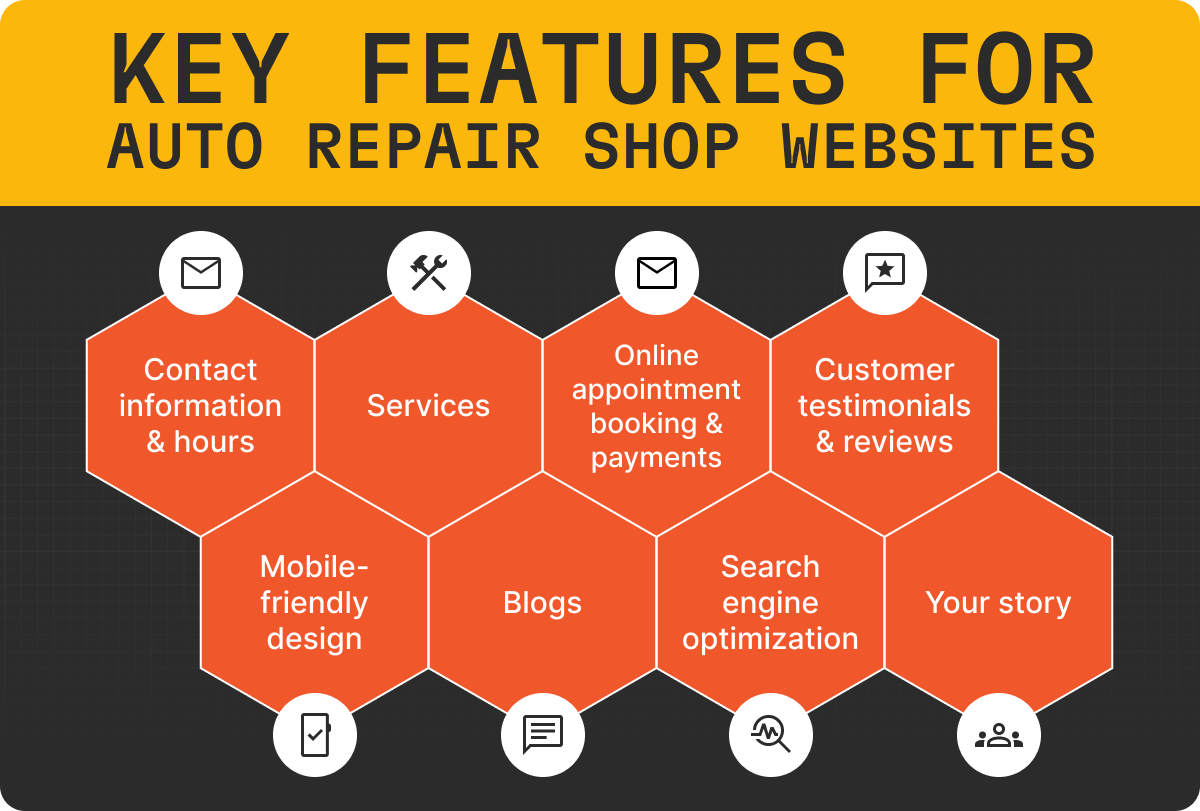Effective customer communication is crucial in the auto repair industry, no matter how big or small your shop may be. In fact, customer communication is at the heart of the most successful shops. However, there’s more to it than just writing a repair order or making a phone call and leveraging effective strategies for communicating can make the difference in a shop’s level of success. In this guide, we will go over qualities of great customer communication and how you can leverage digital tools like your auto repair shop management system to be a better communicator. Together, these assets can help you enhance customer loyalty and grow your shop’s bottom line.
Good communication in your shop is characterized by:
- An efficient and accurate workflow
- Understanding and fulfilling customer needs
- Creating trust and driving safety by educating customers on their vehicles
Maximizing and Streamlining Your Workflow
Good communication starts internally. Streamlining communication between your service writers and technicians is key to ensuring the customer’s needs are met in the most efficient way possible. To master this, encourage your team to leverage internal tools like your shop management system to streamline internal conversations. This can help create a more efficient communication process, allowing you to both maintain a continuous workflow and enhance your overall customer experience. Some of Tekmetric’s features to streamline workflow include:
- Job Board. Within Tekmetric, internal and external notes can minimize the back-and-forth during a repair process. For example, internal-facing notes on a job board allow for immediate communication between your technicians and service advisors with just the click of a button. Additionally, job boards also have customizable statuses that share the state of a repair at a glance – no more chasing down a technician after your day off for a progress update. Together, these features streamline your shop’s internal communications, driving efficiency and allowing smoother behind-the-scenes operations for everyone.
- Inventory and Ordering. To help streamline the ordering process, Tekmetric includes a feature that allows the technician to find the parts that they need for the vehicle, rather than going through a service advisor. By empowering the technician to review labor times, order the correct parts and note their needs internally, this feature can reduce communication bottlenecks and enhance communication – from the technician to the service advisor, and eventually to the customer.
Meeting Customers Where They Are
The best way to reach a customer is whichever method they prefer. Some may prefer email or phone, but many people are on-the-go and also appreciate text updates. In fact, 81% of Americans text regularly, with 90% of text messages opened within the first three minutes since it was sent. Because of this, Tekmetric has built-in, two-way texting to help you make your customer experience more convenient. Whether sharing repair updates or enabling a parent to make a payment for their college student from states away, texting enables customers to reach your shop for important matters without inconveniencing themselves. This includes features like:
- Two-way texting. With two-way texting, customers no longer have to deal with phone tag hassles and can reach the shop at the tip of their fingertips. This capability gives the customer more autonomy in the repair process, allowing a convenient way for them to ask questions, view photos or video and approve repairs.
- Text-to-pay. Payment is the final touchpoint you have with a customer. The text-to-pay feature makes this process virtually painless. Customers can pay from their office, in the evenings at home or even from miles away if they are traveling. By offering this option, you can simplify the payment process, and the customer can pick up their vehicle sooner – resulting in a happier customer and more efficiency in your shop.
Facilitating A Culture of Trust, Safety and Education
In the auto repair industry, shops have a responsibility to ensure the safety of their customers’ vehicles. Utilizing digital tools in your shop can demonstrate your commitment to vehicle owner safety, as well as help you facilitate a culture of trust that seeks to educate the average customer about the health of their car. Some tools might include:
- Digital vehicle inspections. DVIs provide two key qualities your customer highly values: information and benefits. A complete DVI with photos, video and clear notes gives customers the autonomy to examine the repairs your technician proposes and decide which recommendations they want to approve. It benefits your shop too: when you share eight photos or more, your ARO can actually increase because the media allows the customer to see where the vehicle needs repairs with their own eyes. With two-way texting, you can send photos directly to the customer’s phone as well, enhancing both the convenience and the level of trust they have in your shop.
- MotoVisuals integration. One of the responsibilities of the service writer is to educate the vehicle owner on why the repair is needed for their car. With Tekmetric’s MotoVisuals integration, you can share clear, easy-to-understand animations and videos with voiceovers that talk about why a repair is important. This helps drive the vehicle owner’s confidence in the repair, creating a culture of education that ultimately drives trust and loyalty and keeps your customers coming back for more.
The Bottom Line?
Ultimately, communication is a strategic business tool that can drive efficiency and enhance your shop’s performance. By prioritizing clear, consistent and personalized interactions, you can build lasting relationships, enhance customer satisfaction and elevate your shop’s performance. Embracing digital tools and strategies like Tekmetric can empower you to optimize your communication efforts and achieve sustained growth. This commitment to maintaining a customer-first mentality is reflected in your ability to communicate both with your team and your customers and, when done effectively, can increase customer retention and lead to more profit for your shop.



.png)
.png)




.svg)



.svg)